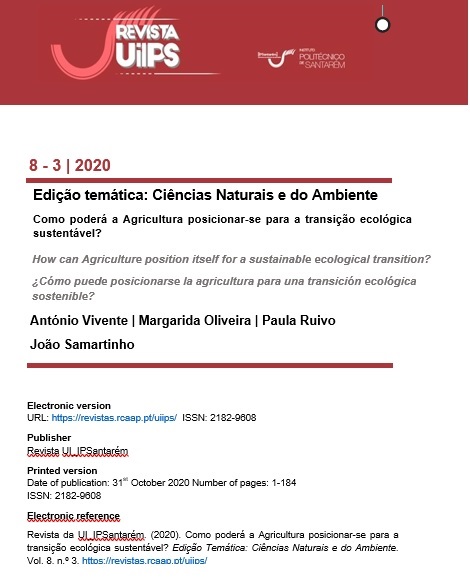Development and growth of faba bean (Vicia faba L.) “Histal” variety for industry
DOI:
https://doi.org/10.25746/ruiips.v8.i3.21328Keywords:
Development, growth, nutrients export and restitutions, Vicia faba L., yield componentsAbstract
The faba bean for industry plays an important agronomic and environmental function in the production systems of the Tagus Valley. In 2019, the development and growth of the Histal faba bean variety was monitored. The phenological growth stages, the potential and productive population, the fresh weight and the dry weight of the plant were observed and recorded. The yield components, amount of macronutrients extracted and returned to the soil were evaluated. The productive population was 8,7 plants/m2, which represented an emergency of 90% of the potential population. The average number of branches per plant was 5,3. On average, each plant produced 18 commercial pods (60% of the total number) that originated 75,5 grains/plant. Adverse meteorological conditions, throughout the cultural cycle, had a negative impact on the flowering and development of the pods, affecting the yield.
Downloads
Published
How to Cite
Issue
Section
License
Authors publishing in this journal agree to the following terms:
Authors retain copyright and grant the journal the right of first publication, with the article simultaneously licensed under the Creative Commons Attribution License that allows sharing of the work with acknowledgement of authorship and initial publication in this journal.
Authors are permitted to enter into additional contracts separately for non-exclusive distribution of the version of the article published in this journal (e.g., publish in an institutional repository or as a book chapter), with acknowledgment of authorship and initial publication in this journal.
Authors have permission and are encouraged to publish and distribute their work online (e.g., in institutional repositories or on their personal webpage) at any point before or during the editorial process, as this may generate productive changes, as well as increase the impact and citation of the published work.



